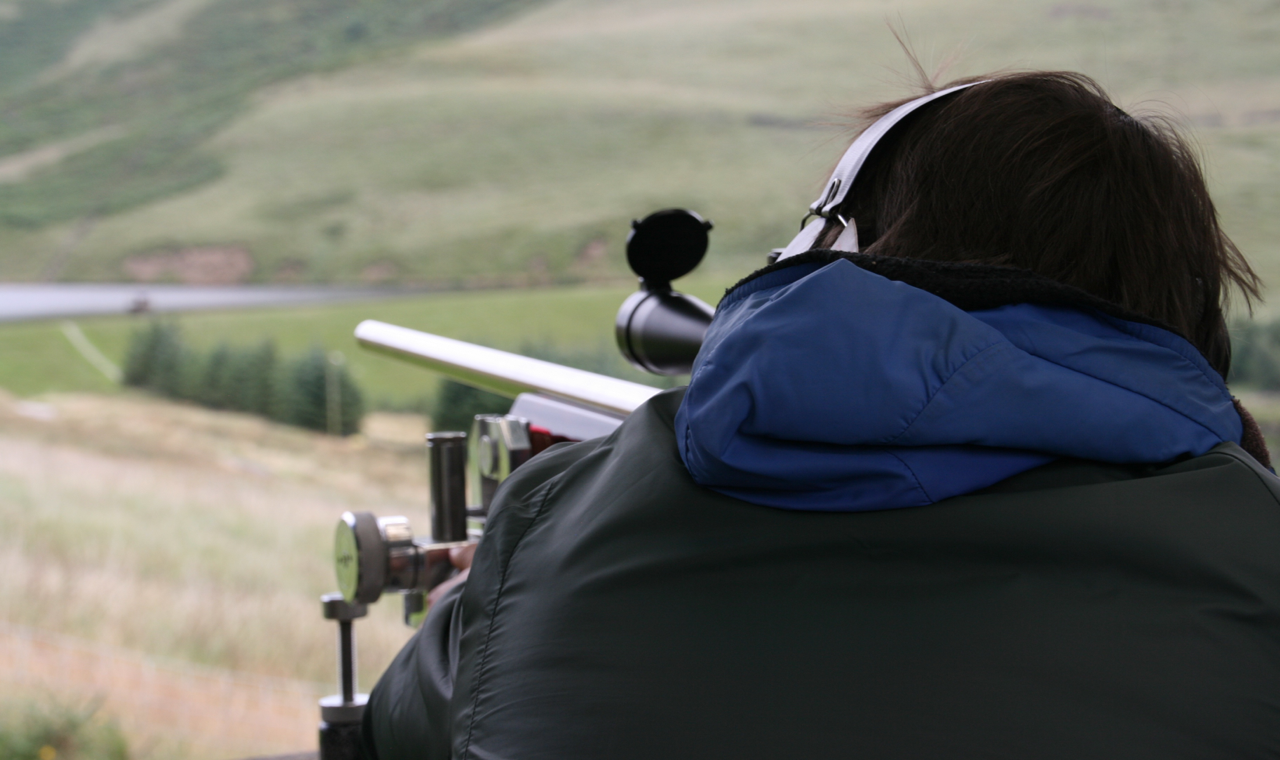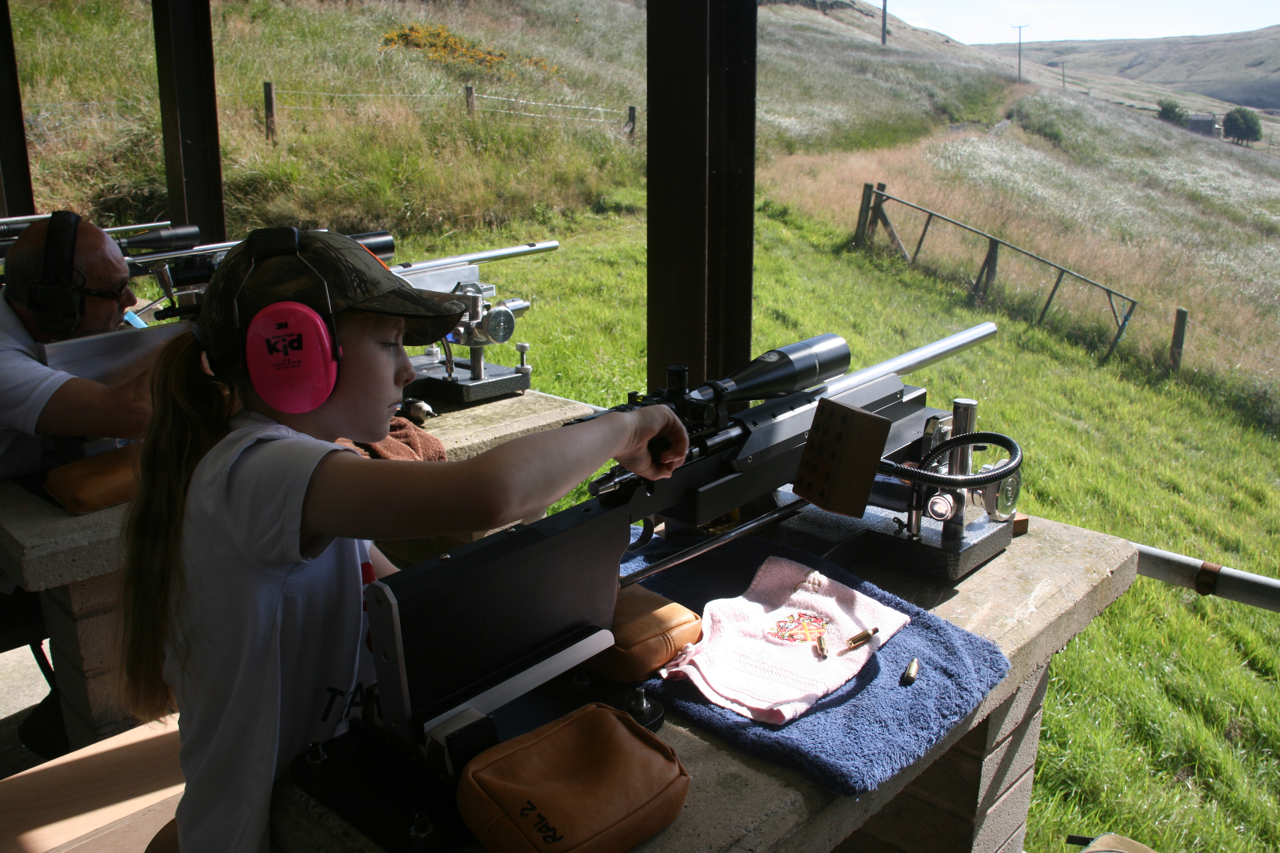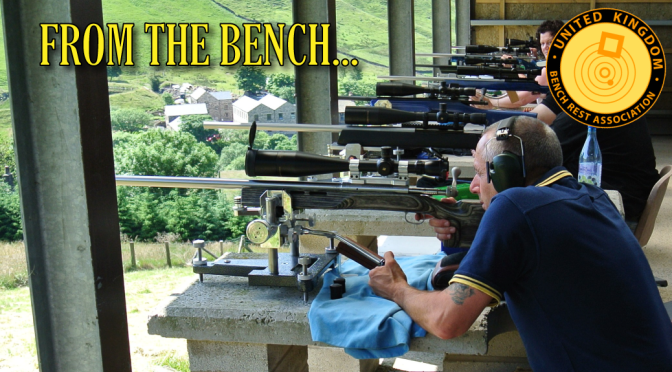VINCE’S REGULAR COLUMN WHEREBY ACCURACY NUTS CAN KEEP UP TO DATE WITH UKBRA CENTREFIRE BENCHREST
Although target-shooting as a sport is exciting to take part in, it’s hardly a ‘spectator sport’.
Unlike football, cricket, athletics etc. neither the shooter or the spectator has much idea of the final result or his/her placing until butts and stats have worked out the scores. In other words, the excitement isn’t there for the onlooker or the shooter.
Benchrest is maybe an exception and this was brought home to me at our last 1000 yard shoot. In benchrest, each 5-shot group is immediately indicated for all to see and the measurement quickly relayed back to the firing-point. Shooters can therefore see exactly what they did and need to do to win – and so can the spectators – who are often their fellow competitors.
Our last competition at Diggle illustrated this perfectly. For once, it was warm and winds were light, though as always at Diggle – tricky.
We had already witnessed a great battle in Heavy Gun between Jochen Schulz (284), Steve Roberts (6XC), Simon Drake (7WSM) and Jonathan Walker (284). Jochen and Steve were banging in 6 inch groups with Simon and Jonathan close behind. A superb four-incher in Match 4 brought Simon back into contention but in the end, Jochen prevailed with his 284 Savage, agging 7.35 in. with Steve close behind on 7.91 inches. Simon’s 4.805 incher earned him HG Small Group award.
Often, weather conditions can change dramatically between morning and afternoon but for once, the light winds held for the Light Gun contest after lunch.
The first relays were soon punching-in some very respectable groups in the 5, 6 and 7 inch range but then, the first ‘fours’ began to appear – from Sean Broxham and then Jeanette Whitney. Sean shooting his 6.5-284 and Jeanette a 6mm Norma Dasher.
Sean put in an amazing three 4-inch groups, giving him an agg. of 4.548 going into the final group. Jeanette, on the next bench was agging 5.127. It was all on the last group. Calculators were clicking – how much smaller did Jeanette’s group need to be than Sean’s to snatch the win?
Answer – close to two inches. They fired, we waited. A few seconds later, the targets appeared with the five shot-holes indicated with spotters. Jeanette’s looked tiny. Sean’s was definitely bigger – but how much bigger? The groups are measured in butts with a specially adapted digital caliper to one-thousandth of an inch and relayed to the firing-point.
Jeanette’s was another five! A tiny 5.014 – giving her a final agg for her four groups of just 5.099 inches! Sean needed a six-incher to pull off the win – but it looked bigger – it was – an 8.956 incher giving Sean a final agg. of 5.65 inches. A great contest enjoyed by shooters and spectators alike.
Results – Heavy Gun:
1st Jochen Shultz 7.350 in.
2nd Steve Roberts 7.913
3rd Simon Drake 8.362
4th Jonathan Walker 9.161
Small group: Simon Drake 4.805 inches

Eventual Light Gun winner Jeanette Whitney with her 6mm Dasher
Light Gun:
1st Jeanette Whitney 5.099
2nd Sean Broxham 5.650
3rd Vince Bottomley 8.128
Small group: Tony Lenton 4.139 inches
Factory Sporter:
1st Graham Watts 11.042
2nd Alan Seagrave 12.634
3rd Paul Pendleton 14.716
Small group: Alan Seagrave 8.597 inches

Once again thanks to Emily Lenton (above) for the photos. As you can see, Emily also shot her Heavy Gun
Next shoot is Sunday 3rd September at Diggle Ranges. Registration 9.00am. email me on vinceb@targetshooteronline.com for more information.

